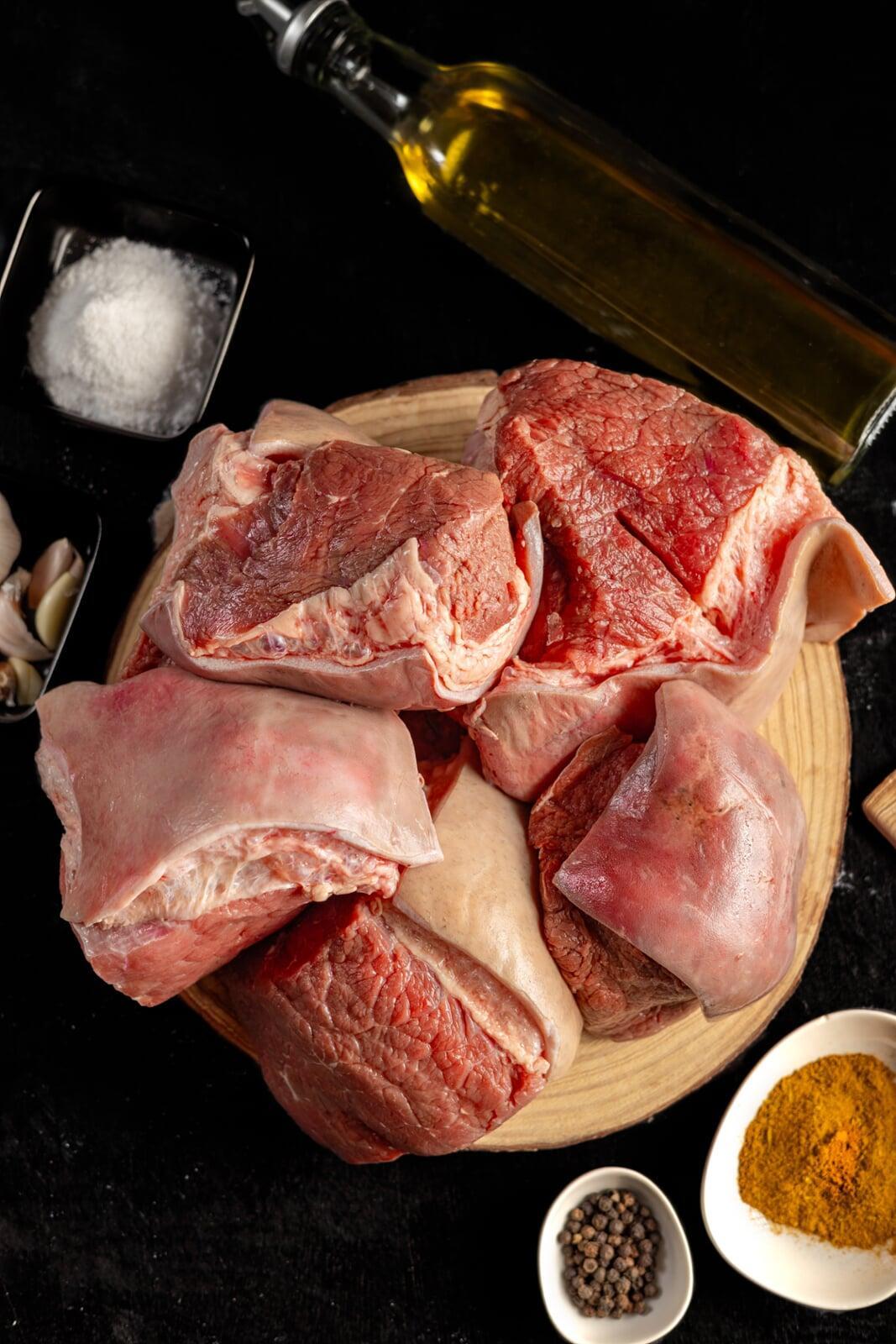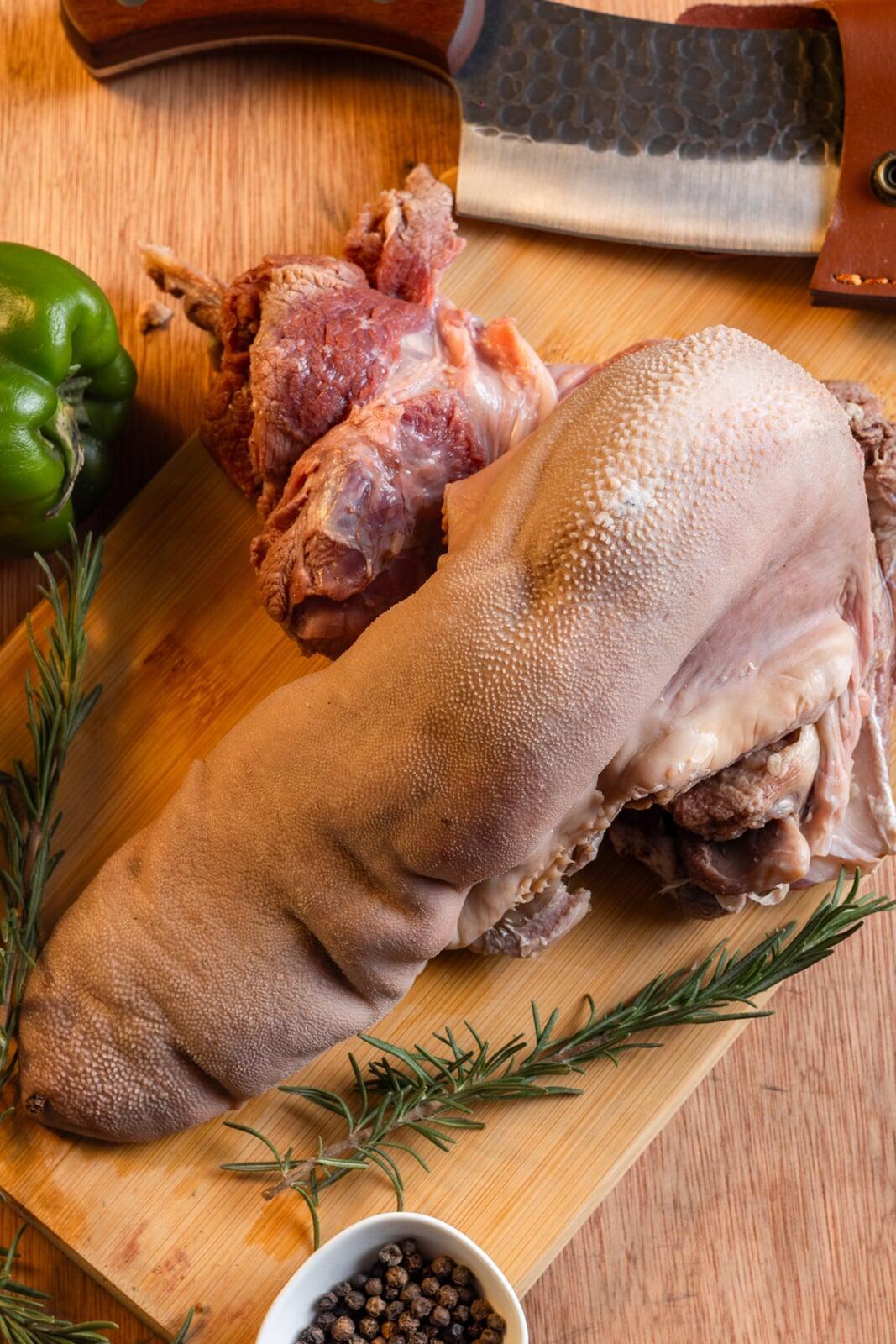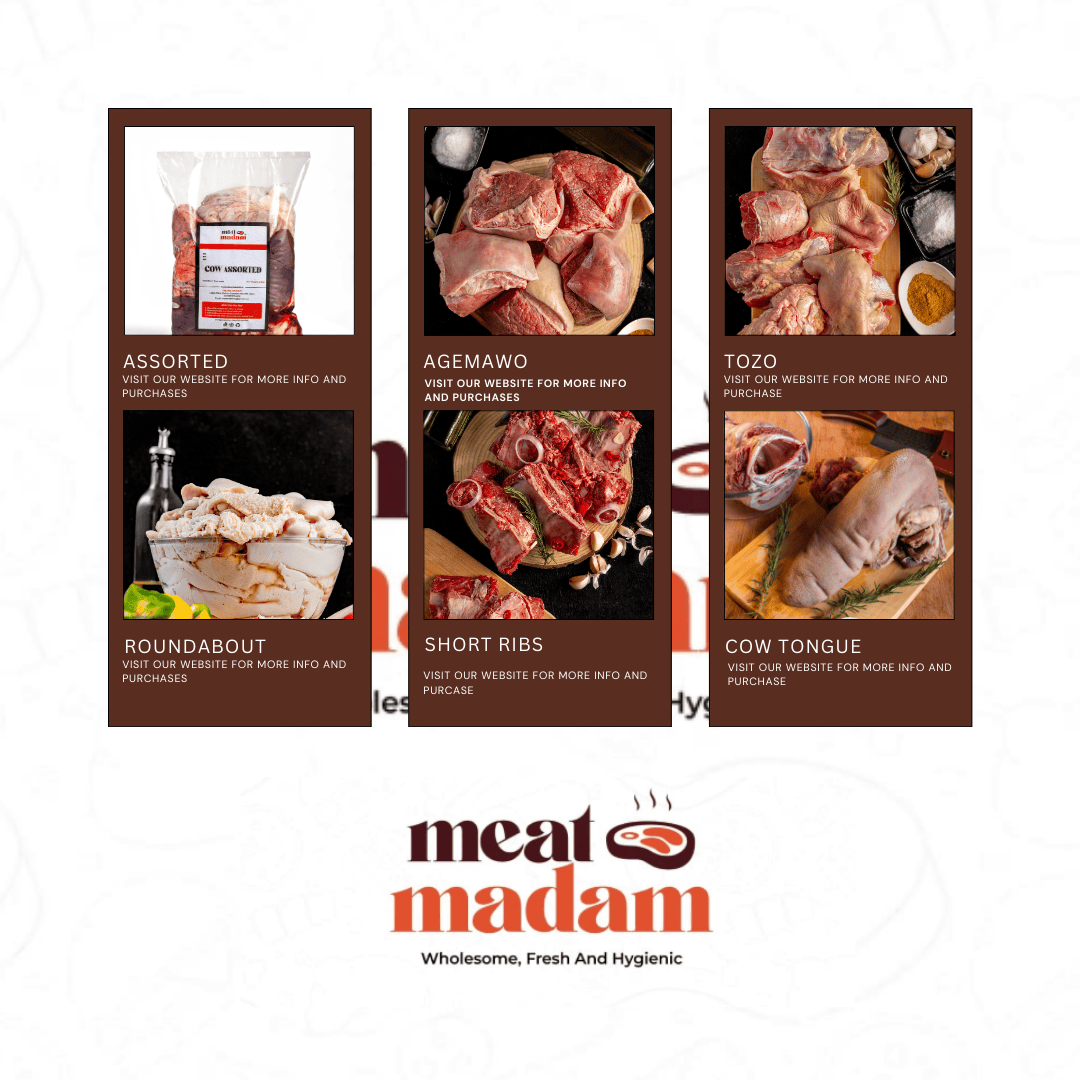Cuts of Beef with a Focus on Local Nigerian Beef Cuts
When it comes to beef, Nigerian butchering and cooking styles are unique. Unlike Western cultures that focus on steaks and prime cuts, Nigerian beef is divided based on texture, fat content, and cooking suitability rather than the exact muscle cut.
If you’ve ever been to a local meat market, you’ve probably heard names like tozo, ijase, and agemawo—but what do they really mean? This guide will break down common Nigerian beef cuts, their local names, and the best ways to cook them.
We Don’t Do Steaks – Here’s What We Eat Instead
In Nigeria, steaks aren’t a thing. While we have tenderloin and sirloin, they’re rarely eaten the way they are in Western cultures. Instead, we focus on richer, tougher cuts that are perfect for soups, stews, and grilled dishes.
Common Nigerian Beef Cuts & Their Uses
🔴 Agemawo – The Tough, Chewy Favorite
What it is: The flesh attached to the skin (pomo)—thick and chewy.
Best for: Assorted meat dishes, slow-cooked stews, or pepper soup.
Cooking Tip: Requires long boiling or pressure cooking to soften.
🔴 Ijase (Beef Shin – Flesh Only or with skin attached)
What it is: Different from global beef Shin—this is just pure flesh, no bones. It's also known as muscle meat.
Best for: Frying, grilling, or stews.
Cooking Tip: Marinate well before cooking/grilling to enhance its deep flavors.
TOZO – THE JUICY, FATTY CUT
What it is: One of the most flavorful cuts, found at the hump on the back of cow.
Best for: Grilling (suya), frying, or as a rich addition to soups.
Cooking Tip: Best cooked over open flames or pan-seared for crispiness.
🔴 Shaki (Tripe) – The Classic Assorted Meat Star
What it is: Cow stomach, available in smooth and rough textures.
Best for: Egusi, ogbono, pepper soup, nkwobi, and assorted meat dishes.
Cooking Tip: Needs slow, long boiling (or pressure cooking) to soften before adding to soups.
🔴 Roundabout – The Flavor-Packed Intestines
What it is: Intestines with a chewy texture.
Best for: Pepper soup, stews, and local delicacies.
Cooking Tip: Wash thoroughly and boil with strong spices to remove any odor.
🔴 Fuku (Lungs) – A Soft & absorbent Cut
What it is: Cow lungs, softer than most cuts and absorb flavors well.
Best for: Assorted meat stews and pepper soup.
Cooking Tip: Boil before frying or adding to soups.
.
🔴 Ponmo (Cow Skin) – The Nigerian Staple
What it is: A chewy cut loved across Nigeria.
Best for: Stews, sauces, and even eaten as a snack.
Cooking Tip: Needs slow, long boiling or pressure cooking to get soft.
🔴 Rib Cuts – More Meat, More Flavor
What it is: Includes short ribs, Beef Ribs, and the Nigerian-style Ribeye Steak (which is less marbled than standard Western cuts).
Best for: Grilling, roasting, and slow-cooked stews.
Cooking Tip: Low and slow cooking brings out the best flavor.
🔴 Tenderloin & Sirloin – The Softest Cuts
What it is: While tenderloin and sirloin exist in Nigeria, they are not as commonly eaten as in Western cultures.
Best for: Roasting, frying, or as a tender addition to rice dishes.
Cooking Tip: Since they’re naturally tender, avoid overcooking.
Nigerian Butchering Style vs. Global Beef Cuts
Unlike Western butchers who separate beef into standard cuts like ribeye, brisket, and flank, Nigerian butchers focus on:
✅ Texture – Tough vs. soft cuts
✅ Fat content – Lean vs. fatty beef
✅ Cooking suitability – Stews, grills, or frying
Instead of T-bone or Filet Mignon, you’ll hear names like Tozo, Ijase, and Agemawo.
Best Cooking Methods for Nigerian Beef Cuts
✅ Boiling & Stewing – Most Nigerian dishes require slow-cooking to soften tough cuts.
✅ Grilling (Suya, Asun, Kilishi) – Some cuts (like tozo) are perfect for grilling over an open flame.
✅ Frying (Peppered Meat, Dodo & Beef, Stir-Fries) – Certain cuts work well fried for added crispiness.
✅ Slow Cooking (Pepper soup, Stews, Nkwobi) – Cuts like shaki, roundabout, fuku and cow legs shine here.
Final Thoughts: Choosing the Right Beef Cut in Nigeria
Next time you visit the butcher, ask for the cut that best fits your cooking method.
Want something chewy and gelatinous? Go for pomo or roundabout.
Prefer soft, rich cuts? Try tozo or tenderloin.
Making assorted meat dishes? Get a mix of shaki, fuku, and roundabout.
Understanding Nigerian beef cuts helps you cook with more confidence—whether you’re making a hearty pot of stew or sizzling some suya!
Other cuts worthy of mentioning are Cow Legs, Cow Tail, Cow Tongue and Cow Head.
What’s Your Favorite Beef Cut?
Do you have a go-to cut for your favorite Nigerian dish?
Drop a comment below! Let’s keep the conversation going.
PS: In Nigeria, we consume all parts of meat, including other cuts—bones, bone marrow, brisket, and biscuit bones.




